#but i can't read japanese!!
Explore tagged Tumblr posts
Text
Mizuchi - Day 22
Race: Snake
Alignment: Neutral
April 19th, 2024
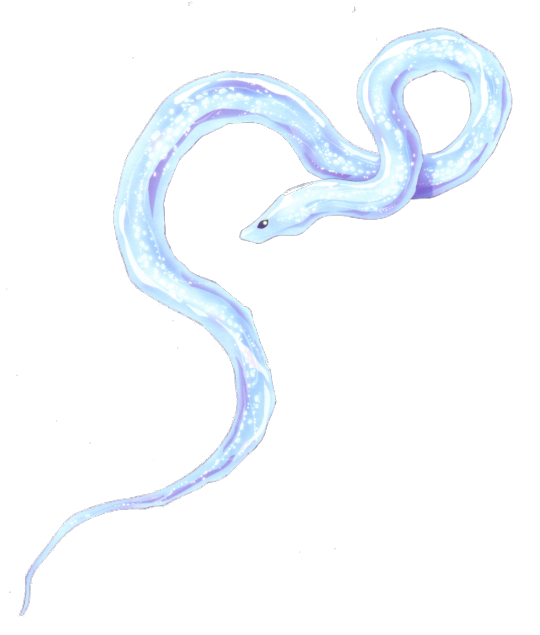
Serpentine monsters are a common sight in mythology; whether it be the great Dragons of yore, the feathered serpent Quetzalcoatl, the aboriginal Rainbow Serpent Yurlungur, or even the classical Ouroboros. However, Japan loves snakes in mythology. We've already covered one in Yamata-No-Orochi, but there are so many more, whether it be the adorable and hilarious Yokai Tsuchinoko, or, in the case of the demon we're covering today, the legendary water serpent, Mizuchi.
Mizuchi is rarely seen throughout the tremendous amounts of tales that make up Japanese mythology, only mentioned in the Nihon Shoki (the oldest still-remaining text of Japan's history, dating all the way back to the Yōrō era) as well as appearing in a single Man'yōshū poem. In spite of this, Mizuchi has been the topic of many scholarly debates, eventually being bastardized through history into everyone's favorite root-chakra destroying turtle, the Kappa.
Mizuchi, however, is not originally from Japan- its name is actually a transliteration from several Chinese glyphs, particularly several glyphs describing different dragons, serpents, and monsters of Chinese mythology. Admittedly, I don't know much about Japanese, but one of the kanji used to spell the name Mizuchi implies that it's a snake, but it first-and-foremost means "Water spirit." The word, in English, can be broken down into "Spirit-of-Water," as Mi- means water, -tsu- (the way that it is pronounced) effectively means 'of,' and -chi is a suffix that describes a spirit. Due to this, Mizuchi's origin as a Chinese myth makes it very, very hard to track down much of a solid origin for it, given that it originates from what was effectively a way to match how it sounds to how it's spelled.
Now, in terms of mythology, Mizuchi was first referenced in the Nihon Shoki- as the story goes, under the reign of Emperor Nintoku, there was a fork at a river that contained a great water serpent that would be a very deadly nuisance- it attacked random passersby, spat venom at anybody who came near, broke apart caravans, and was generally just a prick. Eventually, fed up with this, a man named Agatamori approached the spirit with a challenge- he tossed three Calabashes into the water and challenged the spirit to see if it could sink them. If not? Mizuchi would face a swift death. The dragon, perturbed, obliged, yet was unsuccessful, meeting a demise by the hands of the man.
Later on, Agatamori found his way to the fellows of the mischievous snake, and in a move as genocidal as it was unwarranted, slaughtered the entire clan of Mizuchi. The lake below was filled with their blood, later becoming the noted "Pool of Agatamori." However, in spite of how apocalyptic this may seem, it turns out that there are more recollections of Mizuchi in the mix, and this tale was but one of many.
The god of the river recorded in Nintoku 11 is also commonly seen as a Mizuchi. A dam being built along Yodo River was subject to an attack from an unknown force, completely breached. Confused, the Emperor commanded a rebuild of it, only for it to be breached yet again. This happened time and time again, and eventually, the Emperor saw a solution to his problem through a prophetic dream. Bringing two men to the riverfront, he offered them up to the River God, but one refused. Likely recognizing the circumstances, the man demanded to see the divinity of the snake by trying the age-old calabash trick, tossing a set into the river and daring the god to sink them. Unsurprisingly, the Mizuchi failed, and likely grew to resent calabashes for the rest of its life.
The last example of a Mizuchi in classical Japanese mythology comes from the Man'yōshū, a collection of ancient poems that have been passed down from generation to generation. In one of them, a poem composed by Prince Sakaibe, he describes a short and intriguing tale regarding a Mizuchi. In quote, "I could ride a tiger to leap over the Old Shack, to the green pool, to take down the mizuchi dragon there, if only I had a sword capable of doing just that." The story regards a mizuchi dragon as being almost common knowledge, bringing up as many questions as it does answers- however, the way it regards it in such a casual manner may play into why Mizuchi are so scarcely mentioned.
If everyone knew about mizuchi, then they wouldn't feel the need to record it, right? The casual cadence of the poem seems to give light to the idea that mizuchi were a common sight or concept in ancient Japan, and it may have to do with their later bastardization into Kappa. In some areas, kappa are given a name incredibly similar to a mizuchi, such as "Mizushi," "Medochi," or "Mintsuchi." Past this, a common trait in Kappa stories lies in their hatred of calabashes, something which is similar to the distaste Mizuchi have for calabashes in both stories they appear in. Some historians speculate that mizuchi and kappa were in the same general 'clique' of water dwelling monsters.
God, that was a lot. Mizuchi are confusing. However, in terms of the SMT series, there's a lot less to comment on; their appearance as a water spirit in the form of a snake is faithful, and their design is as simple as it is elegant. They appear to be made of clear water, almost like a rushing river in the form of a snake. Throughout the series, Mizuchi are a common sight in the early-mid game, even appearing as a boss in Nocturne. Their specialty in ice skills, the closest thing SMT has to water skills, is almost obvious. However, overall, there's elegance in simplicity, and Mizuchi is just that.
#shin megami tensei#smt#megaten#persona#daily#mizuchi#this thing was a HEADACHE.#probably the hardest demon so far to research#a lot of my stuff was taken directly from wikipedia#albeit reworded#and i feel a bit bad about it#but i can't read japanese!!#and almost all the primary and secondary sources are#lo and behold#in japanese.#however i do appreciate the challenge and i love looking into weird and obscure folklore!!#its just that this guy was way too much of a doozy.#never again. jesus h jimminy cricket.
10 notes
·
View notes
Text
The world if people stopped applying their understanding of "conservatism" and "religion/christianity" through a very modern, deeply American view onto Death Note (a manga from the Early-mid 2000s which is very much set in the cultural and societal context of early-mid 2000s Japan and all that entails):

#death note#fandom wank#i just be ramblin#listen I get it there's christian imagery#it's not bad to go over what that entails and whatnot. fun even#but beyond some potential parallels and symbols you have to understand that this is a japanese story set in japan in the early-mid 2000s#(and later an imagined 'future' from there)#you are not understanding the story if you're placing the characters on a political spectrum of beliefs based on what conservatism looks#like to you#you're superimposing your personal modern experiences and your country's societal/cultural state onto Death Note and it's characters and#calling it 'a reading'#I genuinely don't know how many more times I can endure people acting like Soichiro Yagami and Teru Mikami have the exact same set of#beliefs and religion and standards as a Southern USA republican/ultra conservative super christian#Or hell. People assuming that Light Yagami can't ever be relatable because someone like Light looks to them like a teacher's wet dream of a#perfect student who is always working hard and studying#when the truth is that while Light is the top student in Japan at one point‚ everything he is doing is within the realm of expectation for#'good' Japanese students. Not exceptional or supernatural or beyond dedicated. Good.#This is a manga where the time period and the setting and society at the time are deeply important#And you will never hope to have an understanding by forcing it to conform to what 'normal' society looks like to you#relating to character's experiences can go beyond relating and end up in territory where you're superimposing your experiences onto their#fictional reality and calling it canon#edit (because people put some good tags on this post): even though I was kind of vague about it this also goes for assuming that#christianity is the only possible religion any characters could be into#the options aren't either athiesm or christianity. there are other big religions in Japan#and in the same way Christianity colors American society and experiences even for people who have never practiced‚ so goes the way society#and people's general beliefs are influenced by Japan's major religions#the person in the tags who mentioned Shinto gets a cookie
75 notes
·
View notes
Text
Quick over-analysis of the ways Barok and Albert address one another, because ace attorney loves showing personality through how characters refer to each other, and I love analyzing it.
Easy one out of the way, Albert exclusively refers to Barok as "Barok" regardless of the situation. He is the only character to do this, with every other character referring to him as some variation of "Prosecutor/Lord van Zieks". This establishes their friendship from the get-go, while also being a bit jarring to the audience as literally no one calls him just "Barok". Even characters who are closer to him, like Gregson and Stronghart, still call him "van Zieks". As far as Albert is concerned, that's just his good friend Barok, not the intimidating Prosecutor Lord van Zieks.
Barok meanwhile has two major ways of referring to Albert:
Firstly, "Albert". This one's simple, he's just reciprocating Albert's first name address, and further cementing their friendship. This is used almost exclusively outside of the courtroom, meanwhile within the courtroom he almost only uses "Professor Harebrayne". An exception to this is right after Albert is forced to accept that the experiment is a failure Barok says:
"And as for you… …Albert. You can't ignore this any longer."
It's a sudden departure from the distant, professional address he's been using the entire trial. It's also a much kinder approach than Barok usually takes when referring to defendants (or anyone really), something Susato comments on directly by saying she's "Never heard him speak that way before." He's breaking the Reaper Persona for just a moment to give his friend a firm, yet ultimately gentle, push.
Back to "Professor Harebrayne", while on the surface it seems distant there is one scene that shows an extra dimension. During the "Laudable not Laughable" scene, a sequence dedicated to Barok giving Albert what is essentially a pep-talk, you would expect him to return to the "Albert" address as seen earlier. Instead, he continues to use "Professor Harebrayne". My interpretation is that Barok is specifically calling attention to the fact that Albert is Professor Harebrayne. He has a title which he earned that is proof of his abilities as a scientist. Following that logic, "Professor Harebrayne" isn't just for formality's sake, but also a representation of the respect Barok holds for Albert separate from their status as friends.
However, Barok actually has a third way of referring to Albert that is used exactly once. In the line directly preceding Albert's (false) confession to murder, Barok says:
"What's all this about… Mr Harebrayne?"
Mr Harebrayne. Not Professor, not Albert, Mr.
If "Professor Harebrayne" is meant to show respect, and "Albert" is meant to show fondness, then clearly "Mr Harebrayne" is the absence of both.
He's not "Brilliant Scientist Professor Harebrayne" and he's not "Dear Friend Albert", he is Mr Harebrayne and he is about to do something so, so stupid. And there's nothing Barok can do to stop him.
My chosen interpretation is that this is Barok's desperate attempt to verbally smack some sense into Albert. This is like the Barok equivalent of grabbing Albert by the shoulders and yelling "What the hell do you think you're doing???"
As an aside, this comes right before the "...Albert. You can't ignore this any longer" line. Meaning the latter can almost been seen as an apology for being so harsh moments before.
Just, Mr Harebrayne. It's such a minor change, but I adore it so much. With how much care ace attorney puts into the way characters refer to each other, I have to assume it was intentional.
#ace attorney#tgaa#albert harebrayne#barok van zieks#for those curious I did check that what he says in the japanese script during the 'Mr Harebrayne' line#I can't read japanese but according to a direct translation by the poster he calls Albert 'Defendant'#which I think ultimately conveys the same thing:#Right before Albert confesses to murder Barok is suddenly significantly harsher on him#(Because his friend is about to something very dumb and Barok is having the worst time imaginable)#Now I might be projecting onto Barok with that one line about wanting to desperately shake Albert by the shoulders#because that's what I want to do during that scene#then again projecting onto Barok what I want to do to Albert is what I do everyday
89 notes
·
View notes
Note
Could you maybe explain why the Japanese versions of BOTW and TOTK seem so much less subtle about the nature of Link and Zelda's relationship?
Even when regular folk translate it it seems less subtle, it's almost like Nintendo's localization was deliberately to be as vague as possible
to be completely honest I haven't found many instances of localization altering the nature of their relationship, but I also haven't ever sat down and actually looked at the japanese game as a whole because my japanese reading comprehension is. probably on the level of a preschooler. I can think of a few instances where I know the localization altered specific lines, but only in pieces of the game I've specifically looked at in japanese for other reasons. if you could give me specific examples of places where there are changes to look into I could definitely do it, but im not strong enough to play the whole game with a kanji dictionary on hand just to understand what the hell is being said to me lmfao
#as much as i would LOVE to be able to do that. as much as it is literally one of the reasons i started learning japanese.#i cannot fucking read. EL EM AY OH#and if were being real i can't really speak either. i can understand what's being said to me maybe 60% of the time if you speak VERY SLOWLY#ごめん!!私はバカです。読めません <3#asks
180 notes
·
View notes
Text

Friendship with genki has ended - pixiv novels is now my best friend 🤝
#it's how i learned English tbh#and now I'm literally in a translation BA...#also - i can't bring myself to read boring textbook practice texts#with fanfiction I've got a lot more motivation lol#japanese langblr#of sorts???
293 notes
·
View notes
Note
I'm glad Yao Shun Yu's mom was rude to rich man president (Xia Shang Zhou), since rich man president's mom was rude to him in the series!
Anon, this is months late, but I was waiting to give you a fun fact about Shun Yu's mom -
She's the producer of ALL the VBL/Vidol shows, the executive producer of We Best Love 1 & 2 and My Tooth Your Love, and the screenwriter for Unknown.

Her name is Cai Fei Qiao and basically, she is fucking amazing! Also, she acted in (and I believe wrote the screenplays for) ALL of the VBL's series:
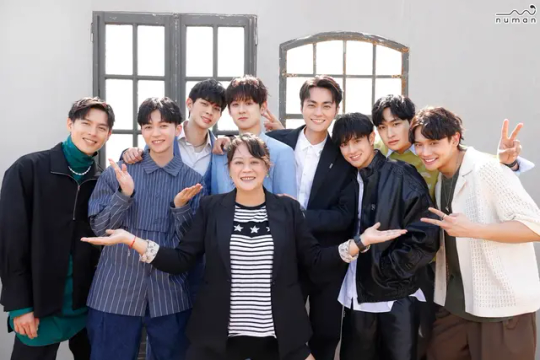
The mom in You Are Mine

The ghost in Stay by My Side

The Seventh Fairy (with Dong Yong) in VIP Only

The bumper car worker in Anti Reset

She worked on a 2013 show with Sam Lin, so when We Best Love came up, she personally asked him to join the series because she felt he could convey the emotional range needed for the show (drunk kiss, yes!), and she also played an instructor in that series.

You know the scene!

EDIT: @thisonelikesaliens informed me she played the aunt in My Tooth Your Love, which she produced (woman in black on the right).

And I'm sure she played a role in Unknown since she wrote the screenplay for it based on the novel (and did a damn good job of it), but I haven't been able to spot her . . . yet.

She is also working on a second set of VBL/Vidol series, so I'm sure we are going to see this man again since he has already been in two of her series.


She recently did an interview giving more details about the upcoming series, and someone on Reddit was kind enough to translate some bits, but here is the original Japanese interview for anyone interested.
So, everyone, thank Cai Fei Qiao for bringing us our favorite Taiwanese BLs!

#taiwanese bls#Cai Fei Qiao#she's amazing#stay by my side#anti reset#you are mine series#vip only series#unknown the series#my tooth your love#we best love#she gave us all of these#AND MORE#but I can't read Japanese or Chinese so . . .#she might be on more credits but I don't know
113 notes
·
View notes
Text
how do I even explain that law had been saying homosexual coded stuff about him and luffy as early as marineford like sir what do you mean your meeting with strawhat was fate 🤨
#one piece#lawlu#had to read the raw scans for that and I was like wow the english translation barely scratched the surface of how gay it sounded#I plan on making a meta post about it but the files are in my computer and I can't type shit there lmao#no wonder buggy was so skeptical of him lmaoooooooo 😭#funny that buggy pointed out his verbal tic too#traflagar law#law#monkey d luffy#luffy#this is my way of reviewing my japanese lessons i guess
69 notes
·
View notes
Text
pronouncing the necron 'sz': personal rating list*
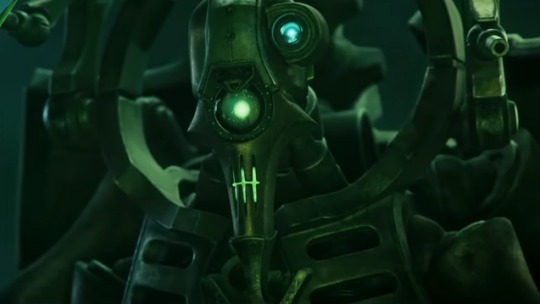
broke: /s/ only ('seras')
woke: /z/ only ('zeras')
provoke: /s/ and /z/ pronounced separately ('s-ze-ras')
bespoke: /ʂ/ or /ʃ/ ('scheras')
invoke: tensed fricative /s͈/ ('sseras')
misspoke: /s/ but evil ('ßeras')
(* Further notes in tags.)
#warhammer 40k#wh40k#necrons#illuminor szeras#necron#shitpost#german speakers i am so sorry you had to read that with your eyes 😂 i also speak german i do know eszetts can't start words#originally this was just for fun but it seems there are quite a lot of ways wh40k fans pronounce this#native english speaking fans usually seem to stick to 's'#whereas in languages that actually use this digraph it would be s/ʂ/ʃ#but in korean translations 'sz' defaults to 'z' so it's definitely 'zeras (제라스)' and 'zarekh (자렉)'#and sometimes the 's' and 'z' are both present and pronounced like in japanese ('s-za-rekh';スザーレク)#(i personally use ʃ because it seems the logical compromise)#in lore terms i think all or most of those pronunciations were used among the necrontyr and there is not one 'canon' version#variety is the spice of life it's fine they're all good. well maybe not the last one but still 😂#according to TDK the necrontyr didn't have a united language until szarekh came along so they must've had different dialects#i reckon that's why the silent king made his universal language. so people could pronounce his name how HE specifically wanted it#it's all becoming so clear now!!!! 😬
94 notes
·
View notes
Text

Persona 1&2 anthology dust jacket
illustration by Eri Takenashi
#persona 2#persona 1#I FINALY HAVE A SCANNNNEERRRRRR HAHEHEHEHEHE#this art is so cute its why i bought it in the first place#anyways i wish i could tell you the actual full legal name of this but i can't read japanese and machine tl#is bad in the best of situations and even worse for stylized text. SO PLEASE TELL MEIF YOU CAN READ IT ^_^#i will try to scan some actual pages from it next. my adventure continues#myscans
65 notes
·
View notes
Text

Today, a timely shoutout! The surname 皆川 is usually read Minagawa or Minakawa, rarely Kaigawa.
皆 is new to this blog. It means everybody, all, or everything. It's read みな, みんな, or カイ.
川 means river. It’s read かわ or セン.
So what is the shoutout? I've just finished listening to the final episode of Re: Dracula (the podcast version of Dracula Daily), and I have loved this show so, so, SO much. Even though I had already read the book and done DD, I had zero idea I could be so emotionally invested in this story. I thin
So I'm sad that I don't have new episodes to look forward to at the moment, but very happy to realize I had a Mina name in my drafts! And I hear it in their Van Helsing's voice—the way he says "Madam Mina" is just delightful and so loving and charming as all hell (and he says it about a thousand times an episode and you better believe I enjoy it every single time). Also, I am half in love with their Mina, whose voice is suffused with such goodness and kindness, and ALSO, Dr. Seward is Jon from The Magnus Archives, which is very enjoyable and fun too.
Anyway! I will re-queue this post for when it starts up again on May 3. You should listen! It is beautifully produced and sometimes there is singing.
OH, breaking news: I have just learned that they are launching a Carmilla(!!!!). It's available November 17 for patrons, or February 14 otherwise.
#learning japanese#japanese langblr#kanji#re dracula#dracula daily#皆#川#(and when i say 'half in love'#i swoon a little when i hear her voice#and might have to watch heartstopper (yeugh) and foundations (boringgg) just because she's in it.#actually *is* foundations boring?#i've tried to read the book like four times and just can't connect#it's my husband's favorite though)
22 notes
·
View notes
Text
I've been rewatching all of CJ's Rhythm Heaven Fever playthroughs and AGHHH it looks so fun I want to get it SO bad.......problem is the game isn't in production anymore so any existing copies being sold online are going for over $100 and I'm a BROKE BITCH
#Shima speaks#Soooo if any of you have a copy of RHF you don't want...bats my eyelashes twirls my hair etc etc#Please DM me so I can pay you to have it shipped directly to my house and into my eyeballs. <3#Tbf the Japanese copies are selling for way cheaper but A. I can't read Japanese and B. I don't have a Japanese Wii. LOL#I could try emulating it but since it's a rhythm game...playing it would be VERY difficult that way#What can I do...what can I do...the only one for me is you...what can I do...what can I do...what can I DOOOOOOO
20 notes
·
View notes
Text
Random question but does any of these Fire & Rescue merchs exist out of Japan?



These are from a really old toho web post and the website attached to the post isn't available TvT
Japan always gets the good stuff istg aghhhh
#disney planes#planes fire and rescue#disney planes 2#i'll never forgive the japanese#the fact that i can't read kanji isn't helping#do u know that they released exclusive dusty keychains for those who booked the tickets in advance
24 notes
·
View notes
Text









I went through a lot of effort to make Limbus Style dossiers for the Investigation Team
#ari art#persona 4#the japanese was really hard for me to get right since i can't read it and I redacted half of it anyway
11 notes
·
View notes
Text
Anyone wants hotchreid drawing?
I want.
Today was tough.
#I'm so sad about my English skill#I can't read fanfics without translator that translate to awful Japanese#hotchreid
22 notes
·
View notes
Text
I don't think I mentioned this... but in Ashes of Memory, Alice receives a letter from Orpheus addressed as "Eury Lamb"
Lamb is the last name of the man who adopted her and experimented on her. It also serves as a reference to Little Girl's "Source of Evil" cosmetic, which is lamb themed.
"Eury" is a reference to Eurydice. People have theorized "Eury Lamb" is the name her adoptive father, Villhelm Lamb gave to her to keep her true identity a secret. But that's not rlly relevant...
What is relevant is that this makes Orpheus' alias choice even MORE obvious he loves Alice... this mans got romantic interest in her...
People who use that adoption letter as proof that the writers want you to view their relationship as sibling-like are so cringe. That letter is literally the direct opposite of "sibling-like".
Folks missed the part called "context": Orpheus [who was 17 at the time] knew she was being abused at the orphanage and tried to get her out in the least stressful way possible... and he couldn't even adopt her to begin with because the orphanage thought it would be best for her to be taken in by a blood relative. Which was a lie, because they ended up giving her to Villhelm Lamb to be used as his lab rat.
Like idk man... the writers have made it so abundantly clear Orpheus doesn't see her as a sister. That One letter doesn't prove he sees her as a sibling because if they wanted to make them siblings... then.... they would have... ya know, made them siblings... but they don't because.... they're not siblings and they're writing a tragic romance LMAO.
As for Alice, in AoM she calls him a playmate... granted she doesn't know Orpheus and her playmate are the same person, but she remembers him as her friend and not her brother... because.... they were never adopted siblings...
But yeah It's so crazy to think Orpheus doesn't love her... I'm over here losing my mind at That Scene in AoM where Orpheus asks Alice if she could play a song for him on her father's favorite piano.
What gets me is that this scene shows how much Orpheus missed her. He buys everything her relatives sold off so he can rebuild the mansions' interior to how it was when they were children. He also goes out of his way to fix her father's favorite piano. The piano didn't just need fine tuning - it was straight up destroyed during the raid. It was a really, really expensive thing to repair. Even though Alice's father had other pianos, some of which could have survived the raid, he rebuilds the one which holds alot of sentimental value to her... LIKE???
REALLY... You guys really want me to think Orpheus did all this JUST out of a sense of guilt for unintentionally causing the raid? You are rlly gonna look me in the eyes and tell me Orpheus using "Orpheus" as his alias while addressing Alice as "Eury" is totally platonic?
Are u rlly gonna say that to me knowing this official artwork made Norton and Melly wear their Pluto and Proserpina/Persephone outfits while Frederick, Orpheus, and Alice are dressed normally? My brother in Christ... will you rlly look me in the eyes and tell me Orpheus [AND THE BIRDS] holding flowers is platonic symbolism...
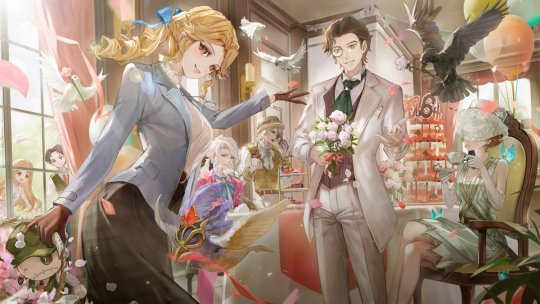
THIS ISN'T EVEN SUBTLE LOOOOL
How much more evidence do people need that these two aren't siblings AND they're on a whole romantic journey together...
#identity v#im so sorry Alice and Orpheus... I'm so sorry that the NA/EU fanbase can't read.#I honestly think people who call two characters with parallels to ancient lovers siblings should be subjected to a background check.#im so fr. There is no universe where someone who thinks and says shit like this isn't a villain#Don't even argue w these people. Just tell them the official japanese tiktok made a Valentines Day video abt them.#watch how they combust trying to explain how they know IDV lore better than an official channel does... even tho theyve never read it LOL#Orpheus could confess his undying love for Alice and ppl will say he loves her as a brother LKSDJFSFD#Unfortunately this would not surprise me since this fandom thinks Wax Artist and his sister WEREN'T Sweet Home Alabama siblings#they were. btw. Philip is not normal about his sister and I dont think girlie was normal abt him either#but yeah the sibling stuff w OrphAlice doesn't exist - not even on a sub textual level. You love to see it!#on another note... Im gonna have to make a lofter account to find that cosplay video aren't i?#[sighs] the things i do for love...
20 notes
·
View notes
Text
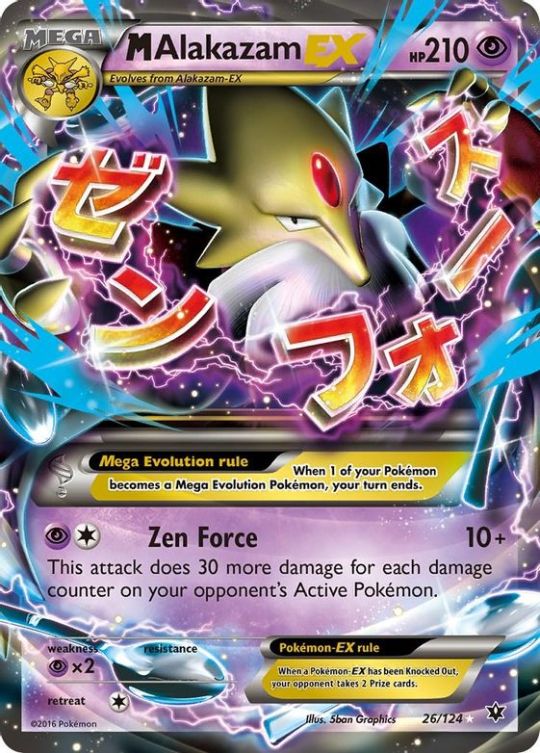

for the longest time I assumed the Mega EX cards had Japanese lettering on them because it was part of the illustration and therefore couldn't easily be altered. but instead it turns out the original Japanese cards had English lettering on them and they just went the extra mile to keep the effect the same for both audiences
#pokemon#pkmn#pokemon tcg#pokemon cards#alakazam#outdesign posts things#it's probs because I can't read japanese but I like the english version better#there's less letters needed and the letterforms look a lot less bulky than the english ones#might grab this one for my collection at some point
156 notes
·
View notes